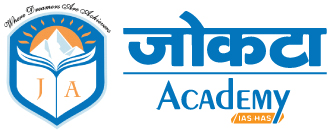Pong Dam at 50: Lessons for Water Management and Climate Resilience
Introduction
The Pong Dam, commissioned in 1974 on the Beas River in Himachal Pradesh, stands as one of India’s major multipurpose river valley projects. Conceived under the Beas Project, its primary objectives were irrigation supply to Punjab, Haryana, and Rajasthan, hydroelectric power generation, and flood moderation.
However, the 50-year record of Pong reveals the paradoxes of India’s water management: years of excess inflows followed by prolonged shortfalls, increasing siltation, and erratic monsoons. This trajectory makes Pong an important case study for aspirants of public policy, governance, and environmental management.
The Performance Trajectory
- Early Decades (1970s–1990s):
- Consistently high reservoir levels, often exceeding 1,390 ft.
- Maximum inflows during heavy monsoons (e.g., 1,405 ft in 1978).
- Strong performance in both irrigation and hydropower functions.
- 2000s Onwards:
- Decline in peak storage levels (e.g., only 1,339 ft in 2009).
- Failure to fill even in average monsoon years (e.g., 1,354 ft in 2021).
- 2010–2022: crossed 1,390 ft only once.
- Recent Fluctuations:
- 1,385 ft in 2022, 1,398 ft in 2023 (flood year), 1,394 ft in 2025.
- Reflects growing rainfall variability and sedimentation crisis.
Key Challenges
1. Climate Variability
- Monsoon has shifted from steady spells to short, intense bursts.
- This causes flash floods but does not ensure reliable storage.
- Aligns with wider climate change patterns in the Himalayas and north-western India.
2. Sedimentation and Capacity Loss
- Pong has lost more than 20% of its capacity due to siltation.
- Estimated rate: 0.25% per year.
- Sediment inflows reduce both live storage and turbine efficiency.
3. Agricultural Stress
- Irrigation allocations to Punjab, Haryana, and Rajasthan are directly impacted.
- Over-dependence on groundwater worsens—already 75% of Punjab’s blocks are “overexploited.”
- Threatens food security, especially for paddy-wheat belt.
4. Energy Security
- Hydropower generation dips during low storage years.
- Emergency releases in high inflow years damage turbines, fields, and infrastructure downstream.
- India’s push for clean energy needs steady hydropower support.
5. Social Dimension
- Initial displacement of 90,702 people across 339 villages highlights the human cost of large dams.
- Many displaced to Rajasthan, facing cultural and livelihood adjustments.
Policy and Governance Implications
- Integrated Water Resource Management (IWRM):
- River basin–level planning instead of isolated dam management.
- Coordination between Himachal Pradesh, Punjab, Haryana, and Rajasthan essential.
- Catchment Area Treatment:
- Large-scale afforestation, soil conservation, and check-dam construction in upper catchment.
- Prevents erosion and reduces sediment inflows.
- Sediment Management:
- Desiltation, flushing, and dredging operations need prioritization.
- Long-term strategy for reservoir sustainability.
- Adaptive Reservoir Operations:
- Use of real-time data, AI-based inflow forecasting, and better coordination with IMD.
- Balancing irrigation, hydropower, and flood control objectives dynamically.
- Demand-Side Management in Agriculture:
- Micro-irrigation, crop diversification, and pricing incentives to reduce water-intensive crops like paddy.
- Link with government schemes such as PMKSY (Pradhan Mantri Krishi Sinchayee Yojana).
- Climate Adaptation Policies:
- Pong demonstrates the vulnerability of large infrastructure to climate change.
- Aligns with India’s National Water Policy (2012) and commitments under the Paris Agreement.
A Mirror, Not Just a Reservoir
The story of Pong is not only about a dam—it is about the uncertainty of the monsoon, the burden of displacement, the fragility of agriculture, and the escalating demands of a growing population. From its highs in the 1970s to its erratic performance today, Pong reflects the broader challenges of India’s water future.
The lesson is clear: the future will not be secured by concrete walls alone, but by ecological resilience, technological foresight, and a willingness to adapt. Without this, northern India risks living in a cycle of scarcity and excess—parched fields in one year, devastating floods in the next.
Stay consistent, read daily, and build the habit of connecting current issues with broader governance, policy, and environmental perspectives. Regular reading and analysis will help you develop depth as well as clarity in your preparation.
📌 Don’t forget to check back every day for fresh, insightful articles on topics ranging from History, Polity, Economy, Environment, HP GK, and much more.
Got topic suggestions or doubts? Share them in the comments—we’d love to hear from you!
👉 Join our online or offline mentorship programs today and take your preparation to the next level.

